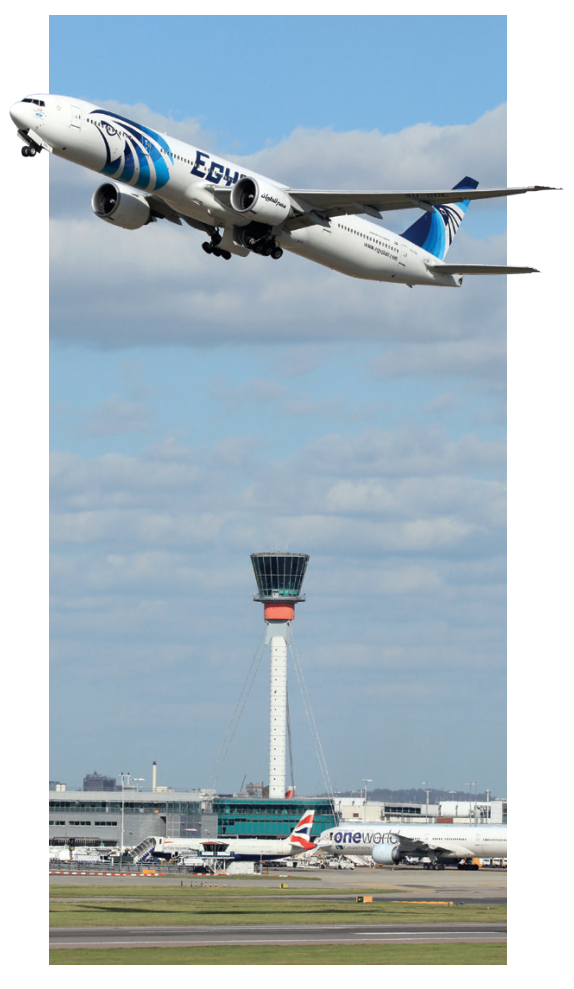Articles
| Name | Author |
|---|
ATM Enhancements and Trajectory Based Operation (TBO) from ICAO
Author: Henk Hof, Head of ICAO & Concepts Unit, Eurocontrol
Subscribe
ATM Enhancements and Trajectory Based Operation (TBO)
Henk Hof, Head of ICAO & Concepts Unit, Eurocontrol brings us up to speed with the paradigm change in Air Traffic Management
Trajectory based operation (TBO) is probably something that readers will think of as a long-term and high level projects but, hopefully, this article will make clear that things in respect of TBO are really progressing. Also, I hope to show that it is a path we will all need to follow in order to really make sure that this industry is sustainable into the future; that we can cope with the expected increasing number of flights, changes in flight operations, the introduction of autonomous aircraft and other issues we will face. In the headlines at the top of the article, I use the words ‘paradigm change’ deliberately. People often talk about paradigm changes when they really mean big changes in the scale of a continuing concept. However, in the case of TBO, we really are looking at a fundamental change in the basics concepts that underpin air traffic management.
SETTING THE SCENE FOR AIR TRANSPORTATION
Air transportation and trajectory based operation will very much connect everyone affected by and involved in the planning and operation of flights. And there are many participants in air transportation, each with separate responsibilities (figure 1).
.png)
Figure 1
The aircraft operator
There are, for instance, many different types of aircraft operators; from those that operate a few flights with a few aircraft to those that operate a global network. But even to operate a single flight within a global network, the operator needs to get permissions, take into account any curfews and understand the availability of ground resources. There needs to be a flight crew available and there need to be connections between flights and flight time limitations as well as rest restrictions have to be taken into account; plus ensuring that the correct equipment qualifications are present in the flight crew. A very important consideration is the passengers and cargo, again with any connections to be considered as well as on-time performance.
And then there’s the flight itself that is operated according to different information that has to be taken into account:
- Winds;
- Weather;
- Fuel;
- Alternates;
- Performance;
- Obstacles;
- Weight & balance;
- Deicing;
- Volcanic Ash;
- ETOPS;
- MEL;
- Flight Following and tracking;
- Re-planning.
All of this has to take place whilst also managing risk and uncertainties such as, with long-haul flights, there might be inaccuracy in information like weather that can vary during the duration of a long flight.
.png)
Figure 2
Air Traffic Management
Looked at from Air Traffic Management (ATM) the process starts with scheduling (the more commercial aspect) and then on to flight planning and flight operation. As far as Air Traffic Management is concerned they have to undertake the strategic process of airspace management to ensure that the airspace is optimized according to predicted traffic flows – that’s conducted quite a long time in advance. There’s also workforce planning based on sectorization so that appropriate staff and numbers are available to operate the sectors. Then, closer to and during the flights, they start to manage flows, synchronize flights and plan separations. As figure 2 shows, these things are not discreet but they all interact on the same flight and, using the same flight information including trajectory information. The system works with coordination between participants, air traffic flow management, air traffic control and the aircraft operator; and they all have an effect on the same trajectory.
The situation with coordination today
When it comes to the sharing of information, things are very limited and, as you’ll see from figure 3, there’s still quite a lot of voice coordination and legacy information exchanges between the various participants.
.png)
Figure 3
There are exceptions but, in general and especially on a global scale, this is the situation. So, all the main functions enjoy degrees of automation and are sometimes, but not always, coupled. For example, in figures 3 and 4, you’ll see that the link between ATC (air traffic control) and the Flight Deck is a voice link in most cases; there is some controller-pilot datalink communication but if, say, a controller receives a crew request for a divert based on weather, this instruction is not recognized by the automated system so cannot be used in planning or even in optimizing the flight. The result is the plan that has been carefully prepared by flight dispatch and provided to the network manager for flow management is not followed: there is a plan but it’s a case of ‘file and forget’. The plan has been sent but there’s something else… especially when the aircraft transitions through various air navigation service providers – another weak link in the chain.


.png)
Figure 4
So, the plan is not followed or there is imprecise execution of the plan, making optimization very difficult. Also, while everyone has a say in different parts of the same flight, their perspectives and priorities are not the same. The result is a situation which does not have the flexibility that we would like. When we have more precise weather information, we want to make sure that we can optimize the flight for example change flight levels and route around weather in a more efficient manner.
What we need to do is to transform to trajectory based operations where decision making, control and coordination are all based on the same knowledge, the same information about the flight trajectory. That also means there is a need to close the loop between the four components… flight deck (FD); flight operation center (FOC); air traffic flow management (ATFM); and air traffic control (ATC). That way, they can all share the same perspective on the flight trajectory. To achieve this means that the control methods have to be transformed in order to make sure that the execution of the flight is more precise through more precise control. When the ATC makes decisions or reacts to requests from the crew, it should do that based on knowledge of constraints in the trajectory. So maybe in a sector there is the possibility to deviate for weather but that might cause problems downstream, it might cause conflicts. Knowing all these constraints across the system is very important.
.png)
Figure 5
Also included in trajectory based operation is a more negotiated process involving the aircraft operator, leading to collaborative decision making. So you can submit a trajectory, a flight plan but you can also start negotiating to make sure that it meets your optimization requirements.
It all leads to a transformation of control tasks which will be different in a TBO environment and what is really important in TBO is that it’s all based on shared plans and shared information. TBO means that everybody has the same information on the flight trajectory which is maintained throughout the flight and is used as a unique reference for decision making and collaborative decision making.
In ICAO, I chair a group that’s working on the concept of trajectory based operation as set out in figure 6.
.png)
Figure 6
The terms are those that we saw earlier such as Scheduling, Flight planning and Optimization. Demand-capacity balancing is in Air Traffic Flow Management. The Airport Operator is also involved with arrival and departure management while Air Traffic Control manages traffic synchronization and separation provision. All of these functions are involved through trajectory based operations. It’s not just one new thing in the system; it’s a new concept and that’s why it can really be called a paradigm change to air traffic management as well as in the interaction between air traffic management and flight operations. The effect is to create a triangle between flight operations, air traffic management and the aircraft and to maintain that triangle throughout the flight: from before take-off to landing, thus increasing the efficiency of the flight and the flexibility in the system.


A FEW EXAMPLES
Re-routing to take advantage of the latest weather information
Assume a situation pre-flight where planning has been completed taking account of a weather system and the flight is routed around the weather based on information known at the time of planning. There will always be a degree of uncertainly in that planning because it wasn’t then known exactly how the weather would develop. But, with trajectory based operation it will be possible to take account of updated weather information and to make smarter and more efficient re-routing decisions based on more accurate information. That might be possible today but the re-routing decisions are not yet subject to automation: any changes are often done between the controller and the pilot; automation is not involved and so that information cannot be used to update planning and, as already mentioned above, the re-routing might result in constraints further downstream.


Climbs
Of course, the trajectory is not only in the horizontal plane but also in the vertical: when a flight is planned there are stepped climbs and descent which can be optimized (figure 6), the more accurately information like winds are known. Here also, with trajectory based operations, clearances and sharing trajectory information will help operators achieve further flight optimization.
.png)
Figure 7
What is also needed is that air navigation service providers (ANSPs) who currently have separate flight data processing systems should get connected with each other and that they also share the maintained information on the trajectory.
Including drones in the system
Not only conventional flights will benefit from the change to TBO but also remotely piloted aircraft (drones). For example, if the link with a drone is lost, lost link procedures will apply and it’s important to know what the trajectory will be that the drone is going to fly to ensure that it is not in conflict with other airspace users; it can fly to its destination or use contingency plans to divert to alternates as shown in figure 8.
.png)
Figure 8
The bottom line is that it’s important to know what these contingency procedures are and to know the trajectory in order to use that in planning.
THE PATH TO TRAJECTORY BASED OPERATION
Trajectory based operation is a concept at the moment; it’s still a point at the horizon of our thinking and, if we abbreviate ‘point at the horizon’ we get PATH. It’s also a path to the future with steps set out to get from where we are today to where we want to be. It’s going to take quite a few years to get there, but it’s the way air traffic management is going to evolve into the future (figure 9).
.png)
Figure 9
The plan is that the concept should be established in 2017 to be presented at various ICAO global fora and at events such as the Aircraft Commerce conferences. The concept goes into more detail than there is space for in this article. It explains how clearances are delivered to the aircraft in-flight in the TBO environment; how traffic separation and synchronization are managed and how the aerodrome operates in a trajectory based environment… plus much more.
Phase 1
In phase 1, the first step will be Flight and Flow Information for a Collaborative Environment (FF-ICE/1). TBO can only work when there is a good exchange of information between the operator and air traffic services. The current flight plan is very rigid, with an old and limited format. FF-ICE will need a new format through which flight information can be exchanged between flight operations and air traffic flow management and to which that flight information is maintained throughout the flight. FF-ICE step 1 is the use of that information pre-flight, replacing the current flight plan and introducing the full 4D trajectory and flight information. It’s shared before the flight and it’s also subject to negotiation to optimize the flight before it takes place. Step one makes use of an information exchange model called FIXM (flight information exchange model), version 5 of which will be the new standard for sharing flight information between the flight operator and flow management.
By 2020, all the standards and the appropriate guidance material plus the information exchange model will be available and we’ll see the first implementation of this.
Phase 2
Phase 2 will include the ground sharing during flight execution. For this, there will have to be a big step to integrate the air navigation service providers and make sure that they share all the same trajectory information and maintain it throughout the flight. So if service provider number one makes a change, service provider number four downstream needs to be informed about it (as do all the others) because of possible constraints downstream. That’s a big step. Also the airlines and the flight operating centers will play a very important role in this; they are the only ones that are connected to the flight end-to-end. For this whole concept, it is a mixed mode environment being targeted that is necessary in order to make transition possible; the concept is not for an ideal world in which everyone operates in a trajectory based operation but there will be patches of air navigation services providers and patches of airlines that do TBO and patches that are still not in TBO. It will be a performance benefit driven transition. Phase 2 is to make sure that the ground environment is working and shares this trajectory.
Phase 3
Finally will be phase 3 to integrate the aircraft into this process so that the aircraft in-flight management system is also maintaining the trajectory and this information can be used to make sure that the trajectory on the ground and in the air are fully consistent and updated. This phase is probably quite far into the future and we wouldn’t yet put a date on it.
TBO OUTCOME
This is the transition that we foresee for introducing this very important change in air traffic management. It’s a change that is needed in order to do things like free flight, flight centric air traffic management and in order to handle more flights than is possible today. If aviation wants to grow, if it wants to be more accommodating to other airspace users like remote piloted aircraft systems, a booming business, we need to be sure that there are the means to integrate them into the aviation system: we need to take this step and go this way.
The outcome that we expect from TBO is better information leading to better decisions and better, i.e. more efficient, execution of the flight. All operators have their own ways to increase flight efficiency with their own performance parameters, indicators and suchlike. Through this new way of working we will be better and more systematically able to accommodate all these various optimizations. And, of course, that leads to all the improvements in figure 10, below.
.png)
Figure 10
We are not yet in a position to put numbers ($, €, etc.) to the outcomes but there is an industry wide conviction that this is the way to go. IATA and the industry are involved in the development and so progress will be well supported.
SUMMARY
Fully in line with the long-term plans of NextGen and SESAR, TBO will offer the way forward for air traffic management; it is the systematic integration of flight operations and air traffic management which includes and enables systematic collaborative decision making and finally it enables a lot of benefits which are also necessary in order to move forward into the next decades of aviation.
Contributor’s Details

Henk J. Hof, Head of ICAO and Concept Unit, Eurocontrol
Henk J. Hof started his professional carrier in 1985 as policy advisor on Communication, Navigation and Surveillance matters for the Dutch ATC authorities. He was member of the ICAO FANS I and II committees and member of a number of ICAO Panels. In 1991 he joined EUROCONTROL as Project Manager responsible for the standardisation and implementation of the Aeronautical Telecommunication Network (ATN). As Head of the Master Plan Maintenance Unit and Leader of the SESAR Master Plan Work Package, he was responsible for the development and maintenance of the European ATM Master Plan. In his current position, Mr. Hof is responsible for the contribution of the EUROCONTROL Agency to ICAO and for strategic initiation and facilitation on Concept development.
 EUROCONTROL
EUROCONTROLThe European Organisation for the Safety of Air Navigation, commonly known as EUROCONTROL, is an international organization working to achieve safe and seamless air traffic management across Europe. Founded in 1960, EUROCONTROL currently has 41 member states and is headquartered in Brussels, Belgium. EUROCONTROL is committed to building, together with partners, a Single European Sky that will deliver the air traffic management (ATM) performance required for the twenty-first century and beyond. The organization has expertise covering both operational and technical elements; advising on both civil and military aspects of ATM; having experience at bringing States with different needs together for a common goal.
Comments (0)
There are currently no comments about this article.

To post a comment, please login or subscribe.